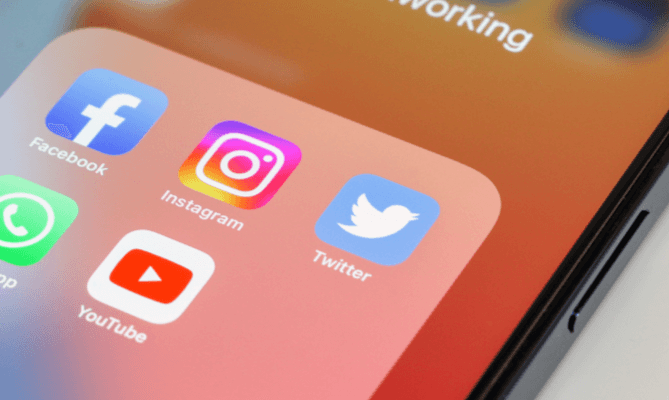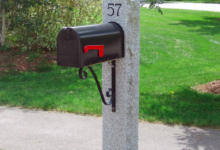How to Use Instagram Hashtags Effectively for Greater Visibility

Instagram is one of the most powerful social media platforms, offering businesses and influencers alike the chance to reach a global audience. One of the key tools that can help increase your visibility on Instagram is the hashtag. Hashtags categorize your content, making it more discoverable to a broader audience. However, the true power of hashtags lies in using them effectively. Let’s delve deep into how you can leverage hashtags to get greater visibility on Instagram.
Understanding Instagram Hashtags
Before we dive into the strategies, it’s important to understand what hashtags are. Hashtags are keywords or phrases preceded by the ‘#’ symbol. When used in an Instagram post, they help categorize content and make it searchable. For example, when you use #TravelTips, anyone searching for or following this hashtag can potentially find your content. Instagram allows up to 30 hashtags per post, giving you plenty of room to increase the discoverability of your content.
Hashtags fall into different categories such as:
- Branded hashtags: These are specific to your business or brand. For example, if your brand is called “CoolShades,” a branded hashtag could be #CoolShadesStyle.
- Industry-specific hashtags: These are hashtags commonly used within your industry. If you are in the fitness industry, examples would be #FitFam or #FitnessGoals.
- Niche hashtags: More specific hashtags that target a smaller, dedicated audience, like #VeganSnacks or #HomeYogaPractice.
Understanding the type of hashtags and their relevance to your audience will help you craft a strategy that drives visibility.
Research the Right Hashtags for Your Audience
Not all hashtags are created equal. To use them effectively, you need to choose hashtags that resonate with your target audience. Research is key here. Take time to see what hashtags are trending in your niche and industry. Instagram offers suggestions when you type a hashtag into the search bar, showing how many posts have used that hashtag. You can use this information to assess whether a hashtag is popular or too saturated.
It’s often a good idea to use a mix of popular and niche hashtags. Popular hashtags have a wider reach, but niche hashtags can connect you with a more engaged audience. For example, a generic hashtag like #Fashion will have millions of posts, meaning your post could get lost in the noise. However, a more targeted hashtag like #SustainableFashion might have fewer posts but will connect you to a community passionate about the subject.
Tools such as Hashtagify, All Hashtag, or even Instagram’s own search functionality can help you discover relevant hashtags for your niche. These tools allow you to track hashtag performance, popularity, and trends.
Balance Between Trending and Niche Hashtags
While it’s tempting to load your post with trending hashtags, a well-balanced mix of trending and niche hashtags will increase your visibility. Trending hashtags get more exposure, but niche ones connect you with a more targeted audience. The trick is finding a balance between broad, competitive hashtags and very specific ones that address your exact market.
If you post a picture of a homemade vegan meal, combining a popular hashtag like #Vegan with a more niche one like #VeganComfortFood could get your post in front of a larger audience while also making it highly relevant to those looking for specific content.
Create Branded Hashtags
Creating and promoting your own branded hashtags is a fantastic way to build a community around your business. A branded hashtag can be as simple as your company name or a campaign slogan. Encourage your followers to use the hashtag when sharing their experiences with your product or service. Over time, this will generate user-generated content, and other users who come across the hashtag will gain exposure to your brand.
For instance, companies like Nike and Coca-Cola have mastered this by using hashtags such as #JustDoIt and #ShareACoke. These branded hashtags not only reinforce their messaging but also create a sense of belonging among users who use the hashtag in their posts.
You don’t need to be a global brand to create an effective hashtag. If you’re running a small business, try creating a hashtag that reflects your brand’s identity or a current promotion. It could be something as simple as #HealthyEatsByJake if you run a health food blog or business.
How Many Hashtags to Use?
Instagram allows up to 30 hashtags per post, but that doesn’t mean you should always use the maximum. The key is quality, not quantity. Research shows that posts with around 11 hashtags tend to get more engagement. That said, it’s a good idea to test different amounts. In some cases, using 5–10 well-chosen hashtags can be more effective than using 30 irrelevant ones. Try various combinations and track your engagement to find out what works best for your audience.
Experimentation is crucial. Keep testing different numbers of hashtags in your posts. For some accounts, 10–12 might work best, while others find better engagement with just 5 highly targeted ones.
Use Hashtags in Stories and Reels
Hashtags aren’t just for your main feed posts. You can also use them in Instagram Stories and Reels. When you add a hashtag to a Story, it has a chance to appear in the corresponding hashtag’s Story, giving your content even more visibility. Reels also benefit from hashtag use, as they have the potential to reach a wider audience through the Explore page.
Incorporate hashtags naturally into your Stories by either typing them out or using Instagram’s sticker feature. It’s a subtle yet effective way to increase your reach without overwhelming your audience with text-heavy content.
Hide Hashtags in the Caption or Comments
Some users avoid hashtags because they think they look cluttered or unprofessional. However, there are ways to include hashtags without making them the focal point of your post. One method is to “hide” them in the caption. You can do this by adding several line breaks after your caption and placing the hashtags underneath. This pushes the hashtags out of view in the feed, keeping your post looking clean.
Alternatively, you can put your hashtags in the first comment after posting. This keeps your caption free from hashtags but still allows you to take advantage of their visibility-enhancing power. Instagram still indexes hashtags used in comments, so you won’t lose out on discoverability.
Analyze and Adjust Based on Insights
Instagram provides valuable insights that can help you refine your hashtag strategy. If you have a business or creator account, you can see how many impressions your post received from hashtags. Look at which hashtags drive the most engagement and adjust your strategy accordingly.
Pay attention to the types of posts that perform well and the hashtags associated with them. If you notice that certain hashtags consistently generate high engagement, you can start incorporating them more frequently in your posts.
Experiment with different types of content (images, videos, Reels) to see how hashtag usage impacts visibility across formats. By constantly refining your strategy based on insights, you’ll be able to improve your hashtag effectiveness over time.
Avoid Banned or Overused Hashtags
Instagram has a list of banned hashtags—hashtags that have been associated with spam or inappropriate content. If you use these, your post could be hidden from search results. Always do a quick check to make sure none of your hashtags are banned. You can check this by searching the hashtag in Instagram’s search bar. If posts under that hashtag don’t show up, it’s a banned one.
In addition, be cautious of overused hashtags. Tags like #Love or #InstaGood are so widely used that your post is unlikely to stay visible for long under them. Avoid these highly generic tags in favor of more specific, relevant ones.
Participate in Hashtag Challenges
Hashtag challenges, especially on Reels, are a great way to boost your visibility. These are trending challenges that encourage users to post content based on a specific theme using a designated hashtag. Participating in these challenges can increase your exposure, especially if your content is featured on the challenge’s main page.
Jumping on the bandwagon of popular challenges can also make your content more shareable. The more people interact with your posts, the more likely your content will appear in their followers’ feeds, further increasing your visibility.
Conclusion: Build Your Hashtag Strategy for Long-Term Success
Mastering how to use Instagram hashtags effectively is key to increasing your content’s visibility. By doing hashtag research, mixing trending and niche hashtags, creating branded hashtags, and analyzing your results, you can boost your reach significantly. Remember, while hashtags can help, consistency and quality content are also crucial to growing your Instagram presence.
Hashtags are just one part of a larger Instagram strategy. As you refine your use of them, keep engaging with your followers, stay on top of content trends, and remain authentic in your branding. Over time, this holistic approach will lead to increased visibility and engagement on Instagram.






